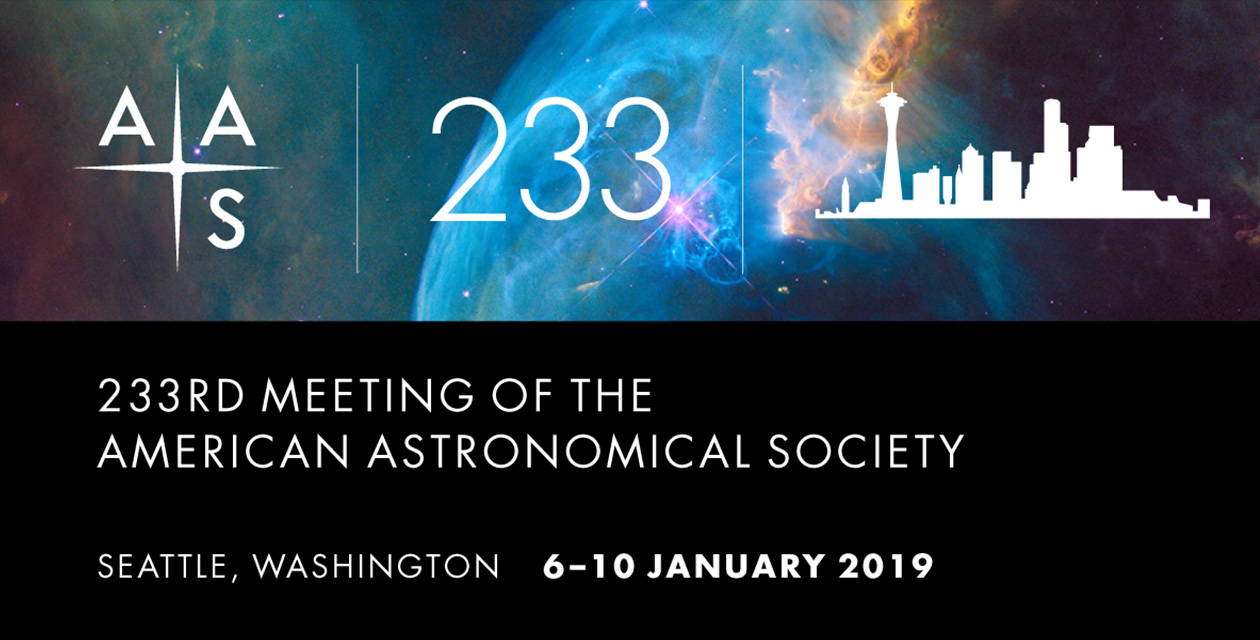223rd Meeting of the American Astronomical Society

Tags: Astronomy
Time: 06 - 10 January 2019 -
Location: Seattle, WA
The American Astronomical Society (AAS), established in 1899 and based in Washington, DC, is the major organization of professional astronomers in North America. Its membership of about 7,000 individuals also includes physicists, mathematicians, geologists, engineers, and others whose research and educational interests lie within the broad spectrum of subjects comprising contemporary astronomy. The mission of the AAS is to enhance and share humanity’s scientific understanding of the universe.
SETI Institute scientists whose work will be presented include:
- Douglas Caldwell: Tracking the TESS Pipeline; The Kepler photometer: nearing 10 years and still going strong
- Joseph Twicken: TESS SPOC Pipeline Data Validation Products: Now Available at MAST
- Margaret Turnbull: Photometric variability of Earth, as an Exoplanet Proxy: Insights from DSCOVR and TSS Simulations; Maximum Angular Separation Epochs for Exoplanet Imaging Observations; Analysis of Exoplanetary Systems as WFIRST Targets; The WFIRST Coronograph Exoplanet Data Challenge; The WFIRST Coronagraph Instrument: a major stepping stone in the preparation of future exoplanet direct imaging missions; The WFIRST Starshade: Simulated Images of Exoplanetary Systems; The WFIRST Coronagraph Instrument (CGI): An Update
- Pamela Harman: Girl Scout Space Science Badges for Daisies, Brownies and Juniors
- David Hollenbach: Stratospheric Terahertz Observatory 2 (STO2) Data Reduction; STO2 Observations of [CII] and the Structure of the Tr14 Region
- Angela Cotera: SOFIA FORCAST Observations of the Warm Dust in Sgr B1
- Jill Tarter: Technosearch - Keeping Track of What Has Been Done
- Jeonghee Rho: NEAR-INFRARED SPECTROSCOPY OF SN 2017EAW: CARBON MONOXIDE AND DUST FORMATION IN A TYPE II-P SUPERNOVA
- Veselin Kostov: A Uniformly Vetted Catalog of K2 Transit Signals
- Jeffrey Coughlin: A Uniformly Vetted Catalog of K2 Transit Signals; A Data Visualization and Manipulation Tool to Improve the Scientific Return of Kepler/K2 Short-Cadence Light Curves; Using Kepler DR25 Products to Compute Exoplanet Ocurrence Rates; The K2 Mission Global Uniform Reprocessing Effort
- Fergal Mullaly: A Uniformly Vetted Catalog of K2 Transit Signals
- Kenneth Mighell: A Data Visualization and Manipulation Tool to Improve the Scientific Return of Kepler/K2 Short-Cadence Light Curves
NOTE: Conference registration is required.
For more information and registration, visit https://aas.org/meetings/aas233
